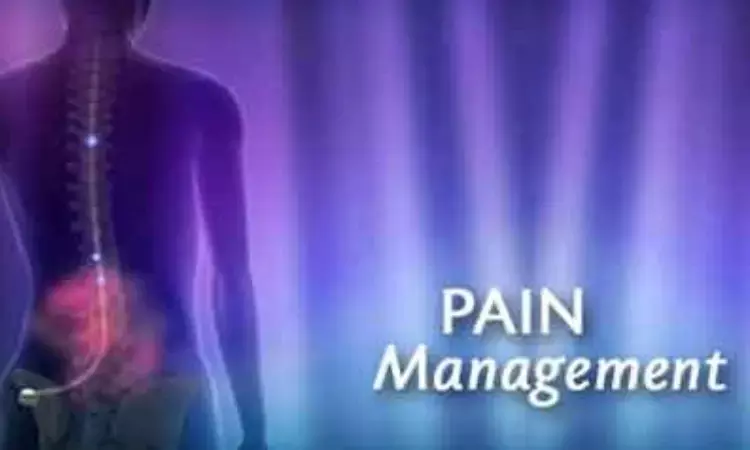- Home
- Medical news & Guidelines
- Anesthesiology
- Cardiology and CTVS
- Critical Care
- Dentistry
- Dermatology
- Diabetes and Endocrinology
- ENT
- Gastroenterology
- Medicine
- Nephrology
- Neurology
- Obstretics-Gynaecology
- Oncology
- Ophthalmology
- Orthopaedics
- Pediatrics-Neonatology
- Psychiatry
- Pulmonology
- Radiology
- Surgery
- Urology
- Laboratory Medicine
- Diet
- Nursing
- Paramedical
- Physiotherapy
- Health news
- Fact Check
- Bone Health Fact Check
- Brain Health Fact Check
- Cancer Related Fact Check
- Child Care Fact Check
- Dental and oral health fact check
- Diabetes and metabolic health fact check
- Diet and Nutrition Fact Check
- Eye and ENT Care Fact Check
- Fitness fact check
- Gut health fact check
- Heart health fact check
- Kidney health fact check
- Medical education fact check
- Men's health fact check
- Respiratory fact check
- Skin and hair care fact check
- Vaccine and Immunization fact check
- Women's health fact check
- AYUSH
- State News
- Andaman and Nicobar Islands
- Andhra Pradesh
- Arunachal Pradesh
- Assam
- Bihar
- Chandigarh
- Chattisgarh
- Dadra and Nagar Haveli
- Daman and Diu
- Delhi
- Goa
- Gujarat
- Haryana
- Himachal Pradesh
- Jammu & Kashmir
- Jharkhand
- Karnataka
- Kerala
- Ladakh
- Lakshadweep
- Madhya Pradesh
- Maharashtra
- Manipur
- Meghalaya
- Mizoram
- Nagaland
- Odisha
- Puducherry
- Punjab
- Rajasthan
- Sikkim
- Tamil Nadu
- Telangana
- Tripura
- Uttar Pradesh
- Uttrakhand
- West Bengal
- Medical Education
- Industry
Post-surgical patch releases non-opioid painkiller directly to the wound

DURHAM, N.C. - A Duke-led team of scientists has developed a bio-compatible surgical patch that releases non-opioid painkillers directly to the site of a wound for days and then dissolves away.
The polymer patch provides a controlled release of a drug that blocks the enzyme COX-2 (cyclooxygenase-2,) which drives pain and inflammation. The study appears Jan. 10, 2021 in the Journal of Controlled Release.
When they started "We were making hernia meshes and different antimicrobial films," said Matthew Becker, the Hugo L. Blomquist professor chemistry at Duke, and last author on the paper. "We thought you could potentially put pain drugs or anesthetics in the film if you just sew it in as you're stitching the person up, then you wouldn't necessarily have to prescribe any opioids," Becker said.
The work grew out of a $2 million grant Becker received from the state of Ohio at his previous institution to investigate non-opioid pain management , one measure toward fighting a nationwide epidemic of opioid drug abuse. Since arriving at Duke in 2019, Becker's team has partnered with Duke pain control expert Dr. Ru-Rong Ji and his team to refine the idea.
The polymer itself, comprised of poly(ester urea) homopolymers and co-polymers, is also special, Becker said.
"Most polymers that are used in medicine swell, and everything comes out at once," Becker said. But this polymer erodes slowly, and its painkiller dose and longevity can be controlled simply by varying the surface area and thicknesses. "The film is about like a piece of paper."
"If you can get four or five days of pain control out of the patch and not have to take those other pain drugs, not only do you avoid some of the side effects and risks of addiction, you're concentrating therapy where you need it," Becker said.
Rat studies also showed that the painkiller stayed in tissues close to the patch site, rather than dissolving into circulating plasma.
Becker said the patch should be able to provide three or four days of wound-pain management, which is the critical period for post-surgical pain. The implantable film would be particularly useful in endoscopic procedures and instances where the physicians and patients would like to avoid opioid exposure such as Cesarean births and pediatric surgeries. In studies with mice that mimic the neuropathic pain of diabetes, the pain patch was placed against a nerve and provided a four-day nerve block.
https://www.sciencedirect.com/science/article/abs/pii/S0168365920307021?via=ihub
Hina Zahid Joined Medical Dialogue in 2017 with a passion to work as a Reporter. She coordinates with various national and international journals and association and covers all the stories related to Medical guidelines, Medical Journals, rare medical surgeries as well as all the updates in the medical field. Email: editorial@medicaldialogues.in. Contact no. 011-43720751
Dr Kamal Kant Kohli-MBBS, DTCD- a chest specialist with more than 30 years of practice and a flair for writing clinical articles, Dr Kamal Kant Kohli joined Medical Dialogues as a Chief Editor of Medical News. Besides writing articles, as an editor, he proofreads and verifies all the medical content published on Medical Dialogues including those coming from journals, studies,medical conferences,guidelines etc. Email: drkohli@medicaldialogues.in. Contact no. 011-43720751


